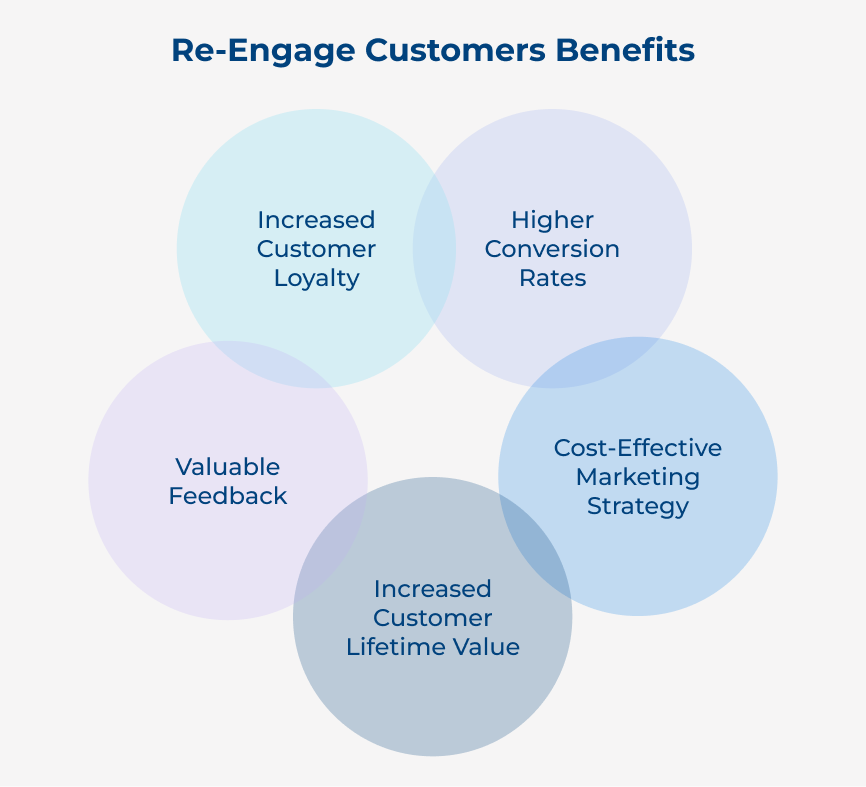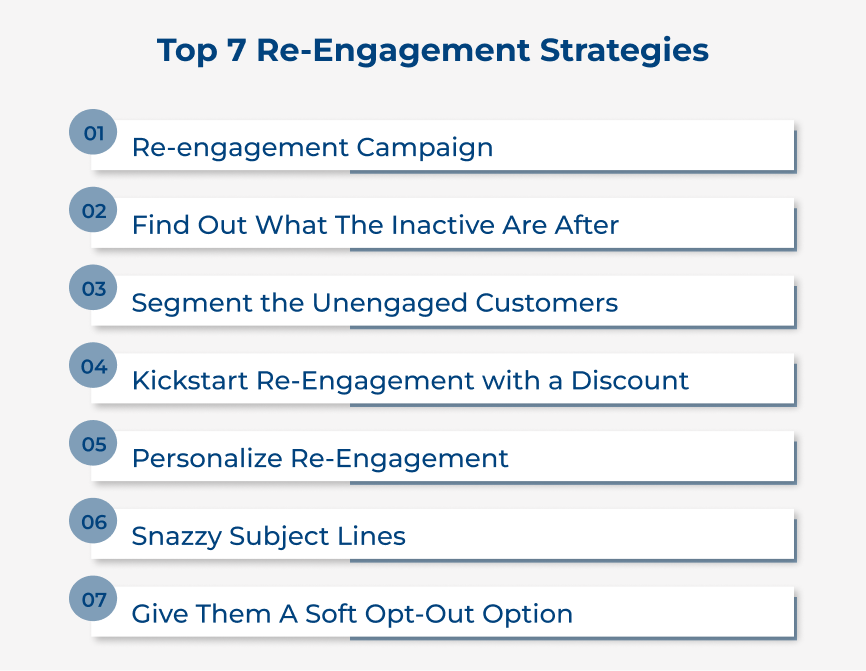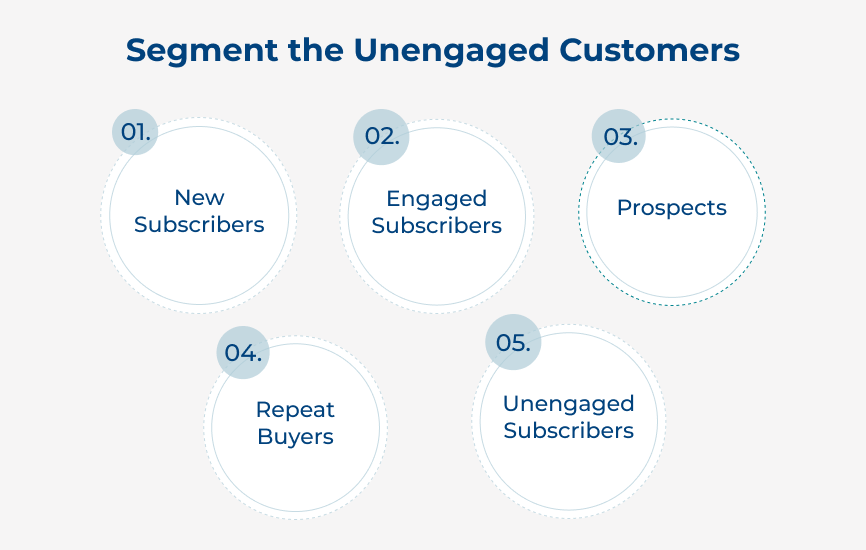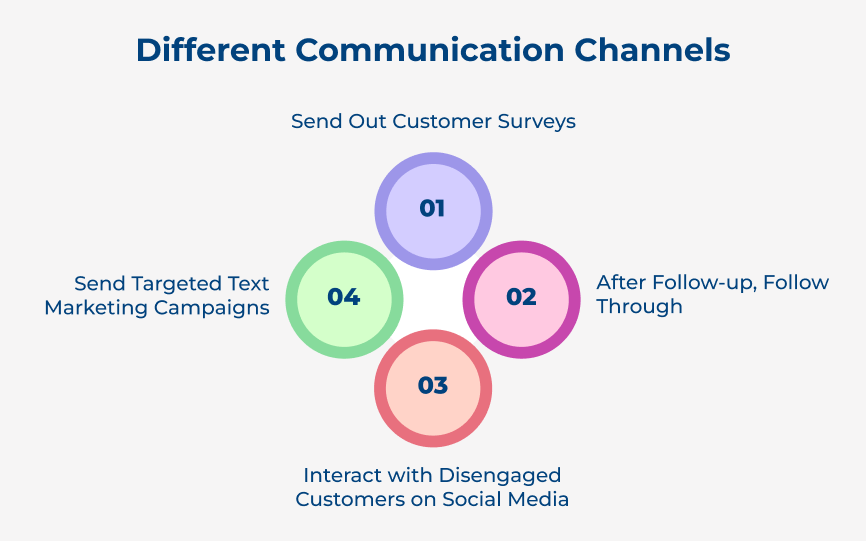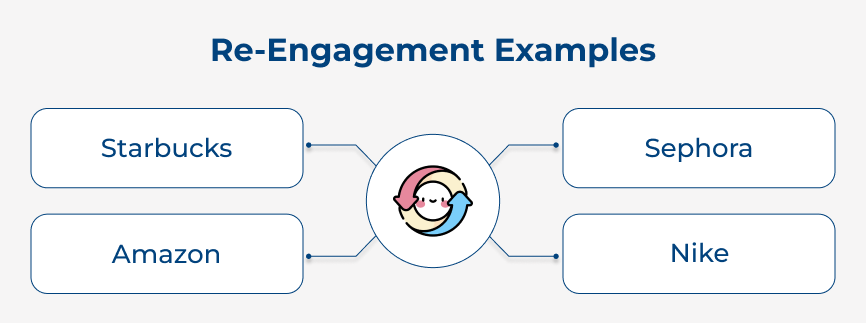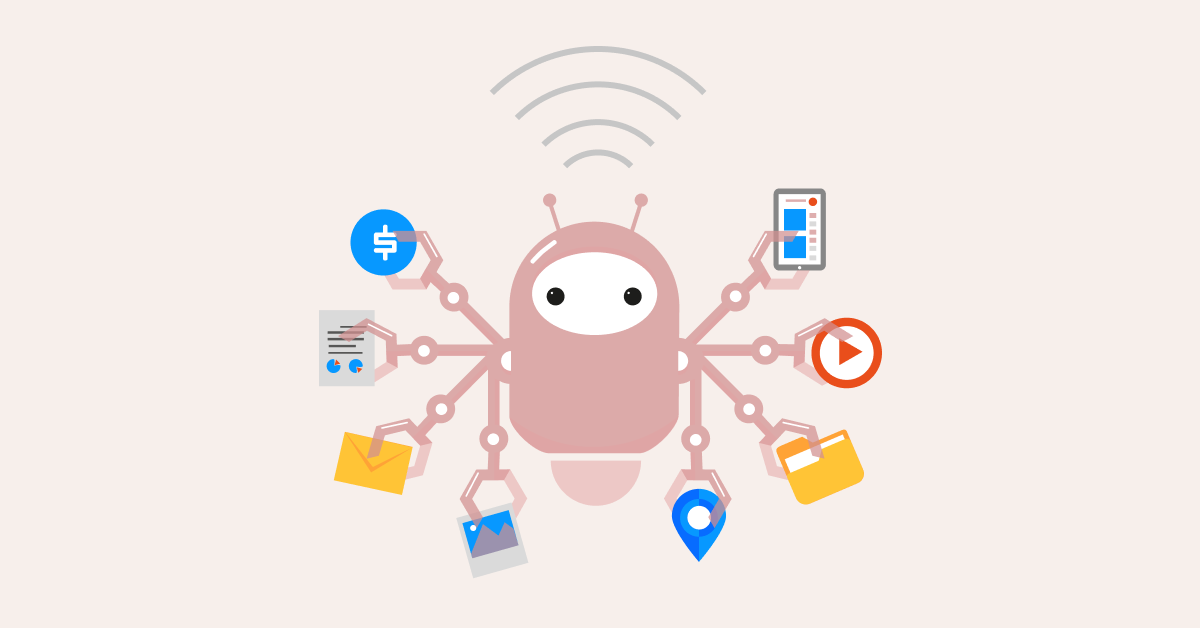Businesses can grab their attention and encourage them to re-engage with the brand by sending personalized communication. Let’s consider a clothing retailer that can segment unengaged customers based on their past purchases or browsing history. They can then send out targeted emails featuring new collections or exclusive discounts to entice the customers to make a purchase.
Best practice:
- Use the customer relationship management system to identify unengaged customers and segment them based on their preferences.
- Craft personalized messages and offers that speak directly to the interests of the unengaged segment. It can include tailored product recommendations or exclusive promotions.
- Monitor the success of the re-engagement campaigns and adjust the strategy as needed. Experiment with different messaging and offers to see what resonates best with the unengaged audience.
4. Kickstart Re-Engagement with a Discount
Businesses are giving consumers an incentive to come back and make a purchase by providing a discount. It can be useful, especially for consumers who may have been inactive for a while or need a little extra push to make a purchase. One way it can help re-engage consumers is by giving them a reason to revisit the website or store. Offering a discount can show them that they appreciate their business.
A use case for the particular strategy could be a clothing store that offers a 20% discount to customers who have not purchased in the last three months. Sending out a targeted email or text message with the discount code can entice customers to come back and shop again.
Best practice:
- Segment the customer list and target those who have been inactive for a certain period.
- Personalize the discount offer to make it more appealing to the customer.
- Track the results of the campaign to see how many customers re-engage as a result of the discount offer.
5. Personalize Re-Engagement
Personalized re-engagement focuses on creating highly personalized experiences. The strategy customizes communication for each customer, considering their preferences, behavior and past interactions with the brand. Customers are more likely to respond positively to personalized messages or offers, as they feel valued and understood. 76% of consumers say they’re more likely to purchase from brands that personalize.
An example of implementing the strategy could be a retail company sending personalized product recommendations to customers who have not purchased in a while. The recommendations can consider past purchases, browsing history, or preferences to enhance customer interest and drive sales.
Best practice:
- Divide customers into different segments based on their behavior, preferences and interaction with the brand. It will allow for more targeted and personalized re-engagement efforts.
- Utilize customer data and analytics to understand customer behavior or preferences. The information can help in creating personalized messages that are more likely to resonate with customers.
- Continuously test and optimize personalization efforts to improve effectiveness. Monitor customer responses and adjust strategies accordingly to ensure maximum re-engagement success.
6. Snazzy Subject Lines
Snazzy Subject Lines is a powerful tool for re-engaging clients who may have lost interest in a brand or product. Crafting eye-catching or enticing subject lines for email marketing campaigns, can grab the attention of subscribers and compel them to engage with the emails. Using humor, urgency, personalization, or curiosity in subject lines can engage customers and prompt them to click on email content.
A great use case for the strategy is a retail brand that is looking to re-engage clients who have abandoned their online shopping carts. Sending out an email with a subject line like “Don’t miss out on the favorites – 20% off ends tonight!” can remind clients of the products they were interested in and create a sense of urgency to complete their purchase.
Best practice:
- Personalize subject lines with the customer’s name or previous purchase history.
- Use emojis to add visual interest and convey emotion in the subject lines.
- Test different subject line variations to see which ones resonate best with the audience and drive the highest engagement.
7. Give Them a Soft Opt-Out Option
Giving them a soft opt-out option is an effective strategy for successfully re-engaging customers who may have lost interest in the brand. Giving customers the option to opt out in a non-intrusive manner, can show that the business respects their preferences. It can help to build trust with customers, making them more likely to consider re-engaging with the brand in the future.
One use case for implementing the strategy could be with an email marketing campaign. Providing an easy opt-out in emails can let customers stop receiving irrelevant emails. Businesses can also provide alternative options for staying engaged, like following the brand on social media or signing up for a newsletter.
Best practice:
- Clearly labeling the opt-out option in all communications
- Providing alternative ways for customers to stay engaged with the brand
- Monitoring and analyzing customer responses to optimize the effectiveness of the opt-out option.
Key Ways to Use Different Communication Channels to Re-Engage Past Customers
Here are some ways to use different communication channels to re-engage past customers along with the significance of each communication channel:






